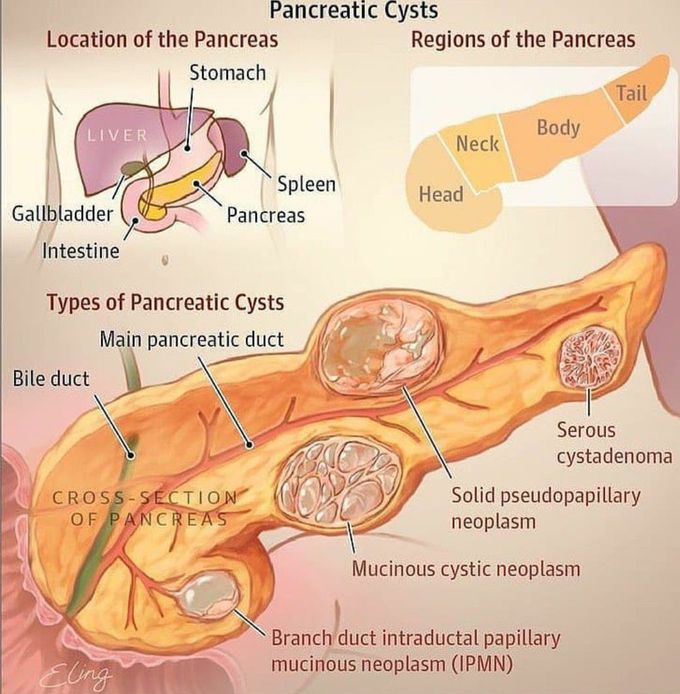


Pancreatic Cysts
Pancreatic cysts are saclike pockets of fluid on or in your pancreas, a large organ behind the stomach that produces hormones and enzymes that help digest food. Most pancreatic cysts aren't cancerous, and many don't cause symptoms. They're typically found during imaging testing for another problem. Some are actually noncancerous (benign) pockets of fluids lined with scar or inflammatory tissue, not the type of cells found in true cysts (pseudocysts). You may not have symptoms from pancreatic cysts, which are often found when imaging tests of the abdomen are done for another reason. When signs or symptoms of pancreatic cysts do occur, they typically include: Persistent abdominal pain, which may radiate to your back A mass you can feel in your upper abdomen Nausea and vomiting The cause of most pancreatic cysts is unknown. Some cysts are associated with rare illnesses including von Hippel-Lindau disease, a genetic disorder that can affect the pancreas and other organs. Pseudocysts often follow a bout of a painful condition in which digestive enzymes become prematurely active and irritate the pancreas (pancreatitis). Pseudocysts can also result from injury to the abdomen, such as from a car accident. Heavy alcohol use and gallstones are risk factors for pancreatitis, and pancreatitis is a risk factor for pseudocysts. Abdominal injury is also a risk factor for pseudocysts The best way to avoid pseudocysts is to avoid pancreatitis, which is usually caused by gallstones or heavy alcohol use. If gallstones are triggering pancreatitis, you may need to have your gallbladder removed. If your pancreatitis is due to alcohol use, not drinking can reduce your risk.

